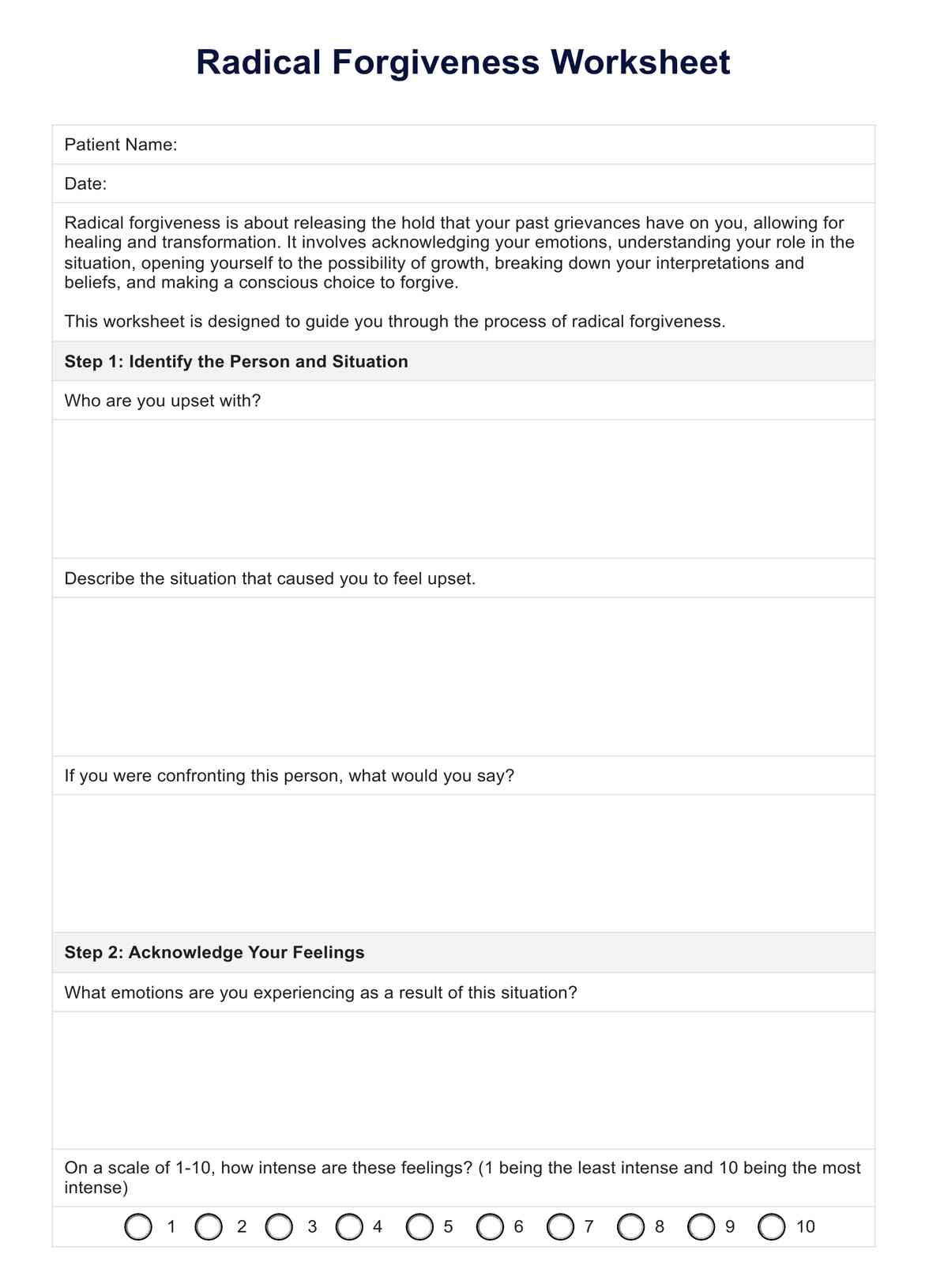The Radical Forgiveness method is a transformative approach that encourages individuals to release deep-seated grievances and resentments, leading to profound healing and personal growth.

Radical Forgiveness Worksheet
Unlock the power of Radical Forgiveness with our comprehensive worksheet. Guide your patients to healing and transformation with our template and guide.
Use Template
Radical Forgiveness Worksheet Template
Commonly asked questions
An example of Radical Forgiveness could be someone choosing to forgive a long-time friend who betrayed their trust, not for the friend's sake, but for their own peace and freedom from anger.
Radically forgiving involves acknowledging your emotions, understanding your role in the situation, opening yourself to growth, breaking down your interpretations and beliefs, and making a conscious choice to forgive.
EHR and practice management software
Get started for free
*No credit card required
Free
$0/usd
Unlimited clients
Telehealth
1GB of storage
Client portal text
Automated billing and online payments











